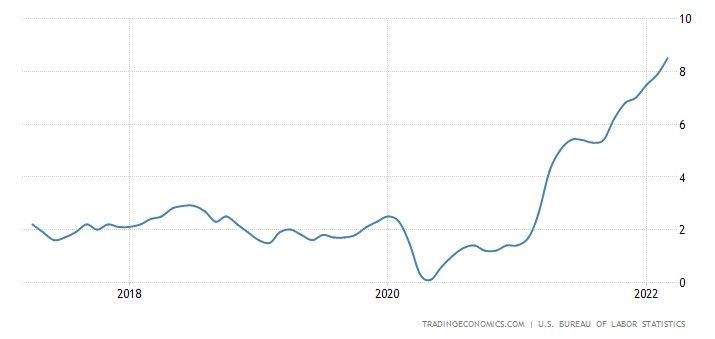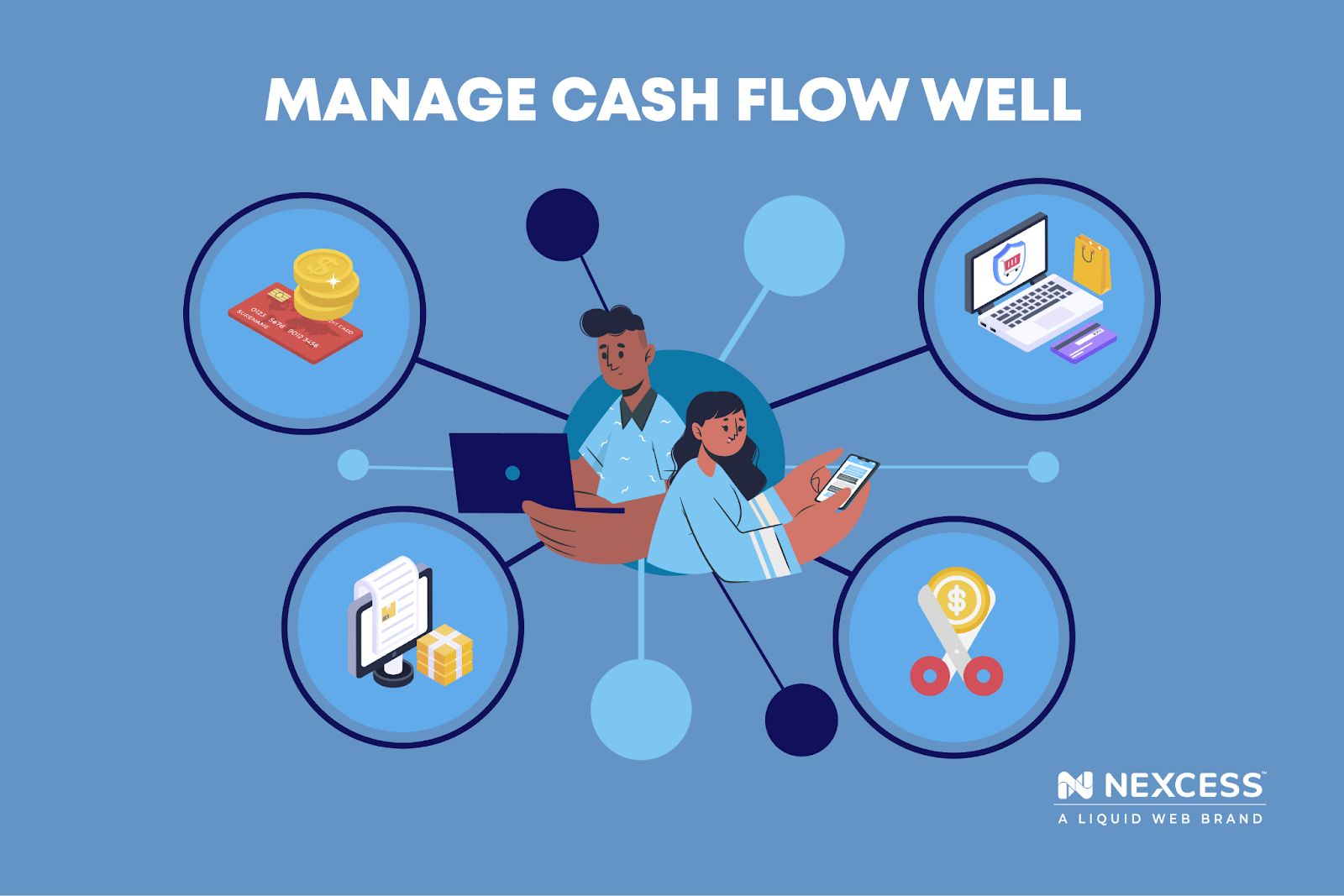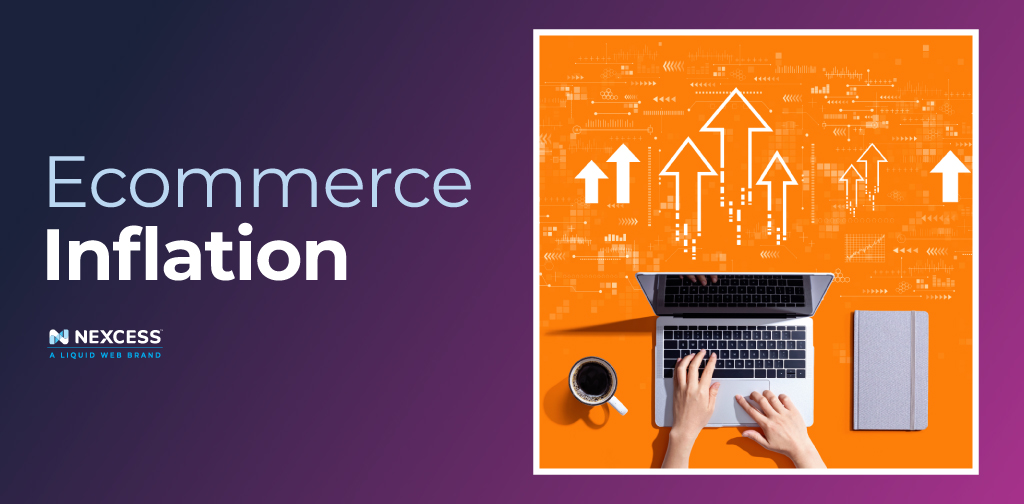The U.S. inflation rate is four times higher than before the pandemic. According to the Bureau of Labor Statistics, the Consumer Price Index (CPI) increased by 8.5% (data for March 2022). From gas to gadgets, everything’s more expensive.

As an ecommerce business, you’ll likely see your margins shrink. Suppliers might raise prices, you’ll pay more for shipping your products, and your employees will ask for a raise.
The government has put the wheels in motion to bring inflation under with the tools at its disposal. The high inflation period won’t stay around forever, but it will be a while before things go back to normal. In the meantime, you’ll need to come up with a strategy to combat inflation.
Here are some ways to deal with inflation:
- Raise Your Prices
- Find Other Suppliers
- Manage Cash Flow Well
- Why Learning To Deal With Inflation Is a Must
- Final Thoughts — How To Deal With Inflation: A Guide for Ecommerce Businesses
1. Raise Your Prices
Raising prices is the quickest answer to the effects of inflation.
If you’re not comfortable raising the prices, you can negotiate a better deal with suppliers. Just note that suppliers won’t agree to a lower price in most cases because they, just like you, need to preserve their margins.
Most ecommerce owners feel at least some reluctance about raising prices because it can drive down demand.
One of the biggest ecommerce business issues is owners tend to overestimate the customer’s sensitivity to price changes. But customers also focus on your product’s quality. As long as your product is of good quality, you probably won’t see a significant reduction in demand.
Not raising prices can reduce your overall profitability and purchasing power.
Suppose you sell a kilo of tea for $10, with a $2 gross profit margin, and the supplier raises the price by $0.50. If you continue selling at the same volume, say 1,000 kilos, your gross income will decrease by $500.
But that’s not it. Even if your gross income is $1,500 ($1.5 x 1,000 kilos), it’s less valuable because of inflation.
For example, last year, you may have spent $1,500 on 550 gallons of gas. With prices up by 48%, you’ll only be able to buy roughly 372 gallons of gas for the same amount.

2. Find Other Suppliers
Changing suppliers isn’t as easy as it may sound to some. You’ve worked hard to find your current suppliers and build a relationship with them. Finding new suppliers means you’ll need to start from scratch.
But with economists saying inflation will take years to normalize and that it will have a lasting impact even once it does normalize, finding new suppliers may be worthwhile. You don’t want to source low-quality products in an attempt to improve gross margins. Stick with the current quality and look for suppliers willing to offer better pricing and payment terms.
Remember that you don’t only pay for the price of a product. You also pay for shipping. Finding suppliers that are closer can trim a considerable amount from the product’s price.
3. Manage Cash Flow Well
A cash-starved business is destined to fail. Cash flow management is a key part of your ecommerce business’s financial planning, even more so when in an inflationary environment.
Higher prices mean you’ll need more cash to pay suppliers for each order, but there’s more to consider. Ecommerce inflation doesn’t just impact your product’s cost. It will also affect your utility bills, salaries, and other operational and administrative expenses.
Price increases across the board mean you’ll need more cash on hand. After all, if you run out of cash, you might have to halt your business’s operations.
There are several ways to manage cash flow when trying to navigate inflation:

- Negotiate longer payment cycles: Ask your suppliers for longer payment cycles so you can hold more cash for longer.
- Manage inventory well: Keep your inventory lean, but always have safety stock. This way, you can continue deliveries even if your supplier delays the delivery because of shortages or supply chain disruption.
- Cut back on expenses: Overspending is a common ecommerce business issue. For example, if you sell fashion products, it’s great to have fashion magazine subscriptions for your employees to keep up with trends. But when you’re trying to preserve cash, you can opt for free resources and cut back on expenses wherever possible.
- Get a business credit card: A credit card will ensure you always have access to money in an emergency. Sure, you can get a short-term loan, but you don’t pay interest on a credit card if you pay the amount back within a month. Note that it’s best to use your credit card as an emergency fund and pay it back in time. Credit cards charge higher interest rates and can cost you a lot of money.
When discussing how to deal with inflation, cash flow is key. It can play a big role in helping you sustain your profitability and fueling growth.
Why Learning To Deal With Inflation Is a Must
Milton Friedman, a Nobel Laureate, suggested that inflation can be thought of as a hidden tax. You don’t pay it explicitly, but it takes money out of your pocket year after year. It does so implicitly by reducing your purchasing power.
Inflation requires careful consideration for planning both business and personal finances. You might be happy about a 5% increase in revenue, but you've lost money if the inflation is 8%.
Similarly, investing in savings accounts also makes little sense during high inflation. If you’re holding emergency cash for your ecommerce business in any account that offers a rate lower than the prevailing rate of inflation, you’re losing money.
The effect of ecommerce inflation will also carry through into your growth strategy. As assets become more expensive and your current funds continue losing value, you’ll need to bring in more profits for capital expenditure.
Most importantly, you’ll need to reassess your cash flows. Your cash outflows will increase during an inflationary period. Running out of cash can threaten business continuity, and that’s why you need to deal with inflation.
Final Thoughts — How To Deal With Inflation: A Guide for Ecommerce Businesses
Ecommerce inflation can impact your finances in more than one way. With inflation at a 40-year high, it’s time for ecommerce business owners to reevaluate their finances and create a roadmap to navigate inflation. Once you know how to deal with inflation, you’ll be better positioned to strategize your growth through an inflationary period.
Raising the prices of goods is a good starting point, but you’ll need to do more.
Look for suppliers that can offer better prices and look at other expenses you can trim. For instance, check out Nexcess’ managed WooCommerce hosting for a reliable, pocket-friendly hosting plan.

